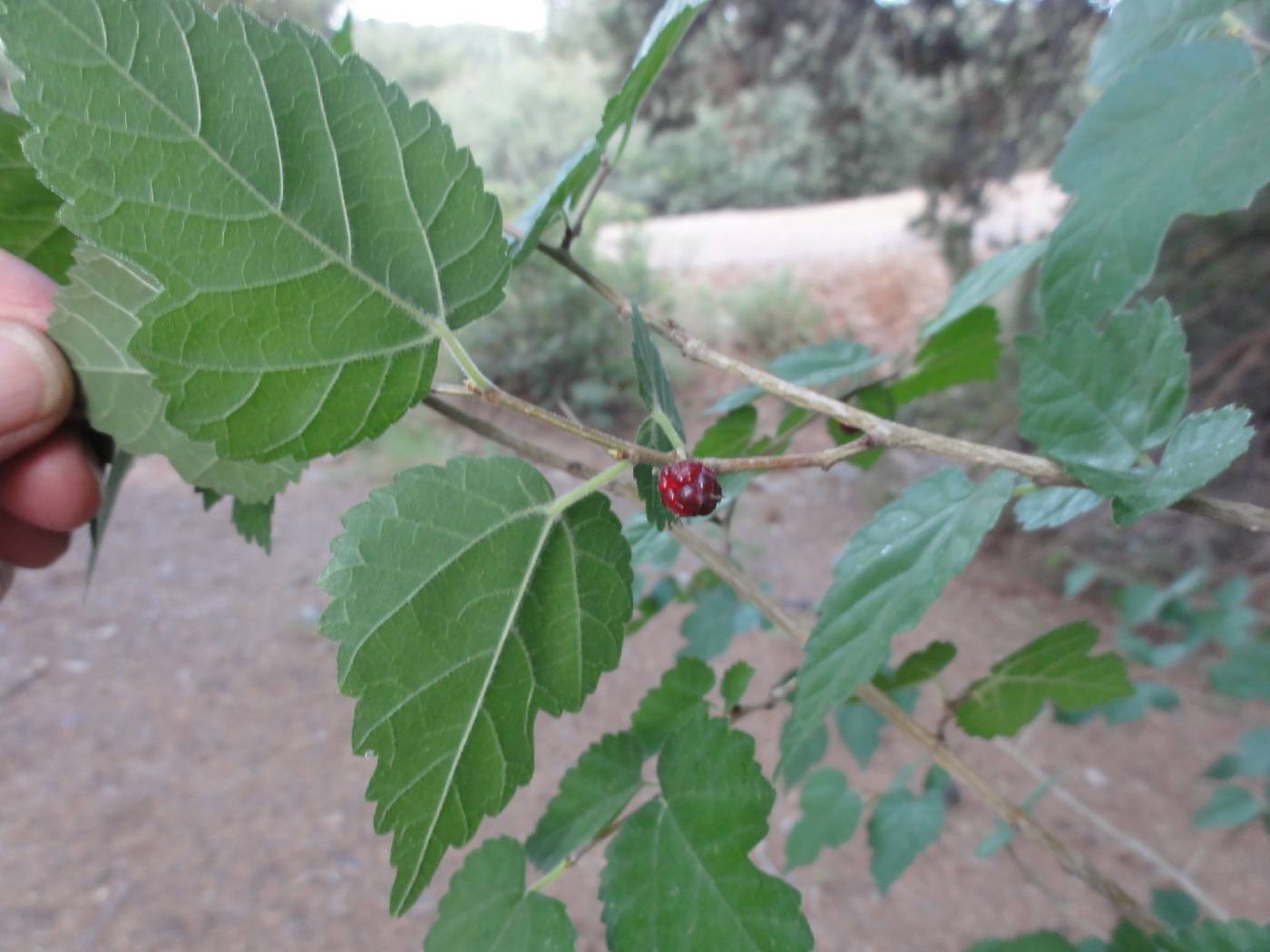
|
Moraceae |
|
|
Trees, shrubs, herbs, or vines , deciduous or evergreen, frequently with milky sap. Leaves alternate (rarely opposite or whorled), simple; stipules present, persistent or caducous; petiole adaxially grooved. Leaf blade: margins entire, toothed, or lobed; venation pinnate or with 3-5 basal palmate veins; cystoliths often present in epidermal cells. Inflorescences racemes, cymes, or capitula. Flowers unisexual, staminate and pistillate on same or different plants, small, occasionally on flattened torus, more often enclosed within fleshy, flask-shaped receptacle (syconium); sepals 2-6, distinct or partly connate (vestigial in Brosimum ). Staminate flowers: stamens equal in number to sepals or calyx lobes and opposite them, straight or inflexed; anthers 1-2-locular. Pistillate flowers: sepals or calyx lobes 4, ± connate; pistils 1, 1-2-carpellate; ovary 1, superior or inferior, 1(-2)-locular; ovules 1 per locule; styles or style branches 1-2; stigmas 1-2, entire. Fruits multiple (syncarps); individual achenes or drupelets partly or completely enclosed by enlarged common receptacle or by individual calyces. Members of the large and diverse mulberry family are mainly woody and tropical; they are most abundant in Asia. The largest genera are Ficus , with approximately 750 species, and Dorstenia , with about 170 species. The family includes important timber trees, e.g., Chlorophora excelsa (Welwitsch) Bentham, iroko, from tropical Africa; Brosimum guianense (Aublet) Huber, letterwood, snakewood; and Ficus spp. Genera with species bearing edible fruits include the mulberries, Morus spp.; breadfruit and jackfruit, e.g., Artocarpus altilis (Parkinson) Fosberg and A . heterophyllus Lamarck; and figs, Ficus spp. Several species of Ficus are commonly cultivated in subtropical regions of the United States. These include F . carica Linnaeus; F . elastica Roxburgh ex Hornemann, India rubber plant; F . benghalensis Linnaeus, banyan; F . benjamina Linnaeus, weeping fig; F . pumila Linnaeus, creeping fig; and F . microcarpa Linnaeus f., Indian-laurel. Rubber plants and weeping figs are commonly sold as houseplants. Economically, the most important species are those associated with the silk trade. Morus alba Linnaeus, M . indica Linnaeus, M . laevigata Wallis, and M . serrata Roxburgh, cultivated in many temperate and tropical countries, provide the natural food source for the silkworm, Bombyx mori Linnaeus. Cudrania tricuspidata (Carrière) Bureau ex Lavallée, used as a food source for silkworms when Morus spp. are in short supply, is cultivated in North America as a hedge plant. The fruit is edible. Native to Korea and China, C . tricuspidata is known from a collection made in 1956 in McIntosh County, Georgia (S. B. Jones Jr. and N. C. Coile 1988), and it is naturalized in Orange County, North Carolina (R. D. Whetstone, pers. comm.).
|
|
This project was made possible in part by the Institute of Museum and Library Services [MG-70-19-0057-19].
Powered by Symbiota


